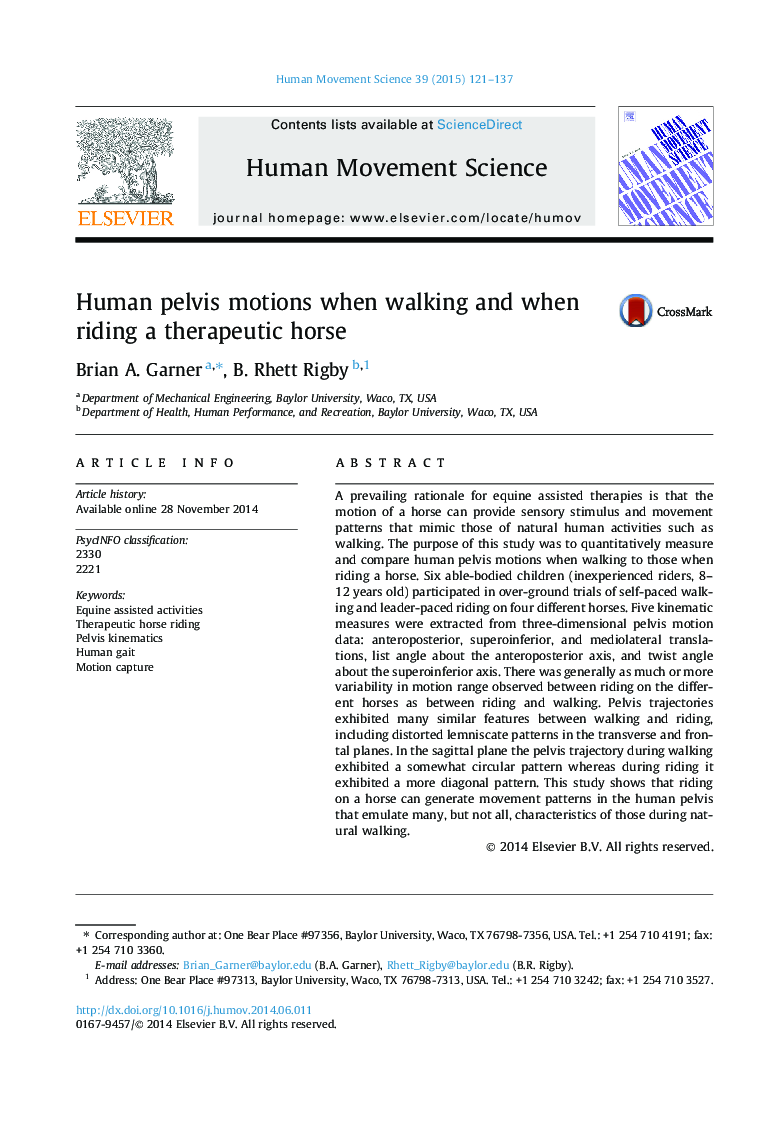| کد مقاله | کد نشریه | سال انتشار | مقاله انگلیسی | نسخه تمام متن |
|---|---|---|---|---|
| 928294 | 1474226 | 2015 | 17 صفحه PDF | دانلود رایگان |
• Pelvis motions of 6 healthy children were measured while walking & riding 4 horses.
• Riding motions between different horses varied more than between walking & riding.
• Displacement amplitudes during riding were quite similar to those during walking.
• The characteristics and features of pelvis motion trajectories were also similar.
• The phase timing of some key motion features differed between walking & riding.
A prevailing rationale for equine assisted therapies is that the motion of a horse can provide sensory stimulus and movement patterns that mimic those of natural human activities such as walking. The purpose of this study was to quantitatively measure and compare human pelvis motions when walking to those when riding a horse. Six able-bodied children (inexperienced riders, 8–12 years old) participated in over-ground trials of self-paced walking and leader-paced riding on four different horses. Five kinematic measures were extracted from three-dimensional pelvis motion data: anteroposterior, superoinferior, and mediolateral translations, list angle about the anteroposterior axis, and twist angle about the superoinferior axis. There was generally as much or more variability in motion range observed between riding on the different horses as between riding and walking. Pelvis trajectories exhibited many similar features between walking and riding, including distorted lemniscate patterns in the transverse and frontal planes. In the sagittal plane the pelvis trajectory during walking exhibited a somewhat circular pattern whereas during riding it exhibited a more diagonal pattern. This study shows that riding on a horse can generate movement patterns in the human pelvis that emulate many, but not all, characteristics of those during natural walking.
Journal: Human Movement Science - Volume 39, February 2015, Pages 121–137
